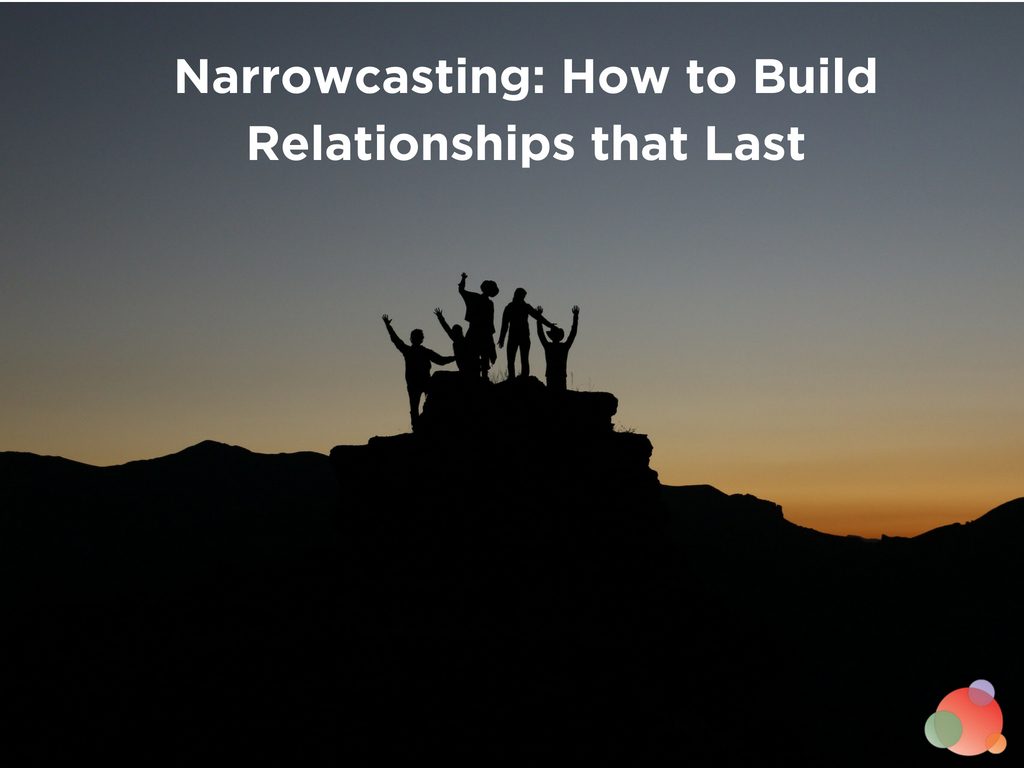 Yesterday, we talked about relationships and how important it is to build them before you need them.
Yesterday, we talked about relationships and how important it is to build them before you need them.
This is a big mantra inside—and outside of—Spin Sucks.
You cannot do the work that we do without relationships.
There is no earned media without relationships.
No shared media without relationships.
I’d argue you can’t even have owned media without relationships. Sure, you can create great content, but no one will read it, listen to it, watch it, share it, or comment on it without relationships.
Relationships are hard work.
After all, you’re building trust with human beings. And that takes time.
But time is not something many of us are afforded. If we’re working with a new client or on a new campaign, leaders want results. Now.
We tend to forget “overnight success” typically takes 10 years or longer.
It takes time.
Numbers Do Not Equal Success
To boot, as we build our fans, followers, and connections, we are encouraged to increase our numbers. After all, human beings equate big numbers with success.
But, as we saw last week when Twitter did a mass sweep of fake accounts, bigger numbers don’t always equate to better relationships—or better influence.
And, as we grow our numbers, the relationships we have begin to wane.
For instance, what happens to those people we began with…and sort of got left in the dust as we got bigger?
Have you ever had an experience with an organization (or an influencer, for that matter) where, the bigger they got, the less access you had?
The fruits of your labor used to go noticed, but now they seem to have forgotten your name?
I had that experience with Livefyre—and to no fault of their own.
But they grew because of a handful of bloggers who were their most fierce brand advocates.
And, as they grew, bigger organizations (you know, like the New York Times) became far more important to them.
We got left behind. And then when they sold to Adobe, we all lost out.
Unless you an Adobe Experience Manager Livefyre user, you no longer get to use it.
Total bummer, too. Nothing has come close to replacing the commenting platform.
But that’s how these things go.
Enter Narrowcasting
Or is it?
Enter narrowcasting.
Narrowcasting, by definition, is:
Spreading an advertising message or signal over a small geographical area, or to a select group of audience. Narrowcasting uses cable television, direct mail, specialized trade publications, seminars, and keyword-associated web advertising. Its objective is to deliver custom-tailored ads based on demographic, psychographic, and past buying patterns to potential recipients who are predisposed to it.
It’s not new—it dates back to the 1700s—nor does it only include advertising messages.
Today, narrowcasting includes how social media has enabled us to speak one to many while we grow our follower base.
It allows us to approach smaller audiences, become more focused, and target who we want to engage with, based on our business goals.
It allows us not to leave our very first and fiercest brand advocates behind as we grow.
The Approach is Always to Blame
When I do my three-hour workshops, during my preparation, I always get a list of attendees and check out their social networks.
It probably won’t come as a surprise to you that 99.9 percent of the pages I visit are all broadcast—or push—marketing.
No one engages. No one is sharing content that’s not their own. And they certainly are not building relationships.
I use that information during the workshop—kindly, of course—to demonstrate why it’s not working for some.
And, inevitably, someone will debate the merits of my presentation because, in their experience, social just doesn’t work.
(Well, yeah. You’re doing it wrong.)
That’s because we never blame the approach. We always blame the platform or the person managing it.
Narrowcasting removes those factors and looks at why people follow you, how to engage them, and what kinds of content are most appealing to them.
The Narrowcasting Formula
There is a narrowcasting formula.
It is:
RESEARCH + ENGAGEMENT = GROWTH
As we talked about a couple of weeks ago when the Unilever marketing chief called for better influencer marketing, you cannot build relationships without research.
When I started out on Twitter, I was BearsFan07.
I only tweeted during the games, and I had amassed quite a following of NFL fans.
It was certainly fun, but it did nothing for business.
So, in 2008, I quietly shifted my account to my name and started to use it for work.
Every Saturday, I would go through the lists I had created in TweetDeck and research people who looked interesting to me, from a business perspective.
I researched Vistage members and speakers (I am both). I researched authors and influencers. And I researched industry leaders.
If they fit my very loose criteria, I would follow them.
And then I would engage with them.
My goal was 100 every week.
Not only did I grow my following really fast doing that, the engagement was out of control.
It afforded me the relationships I needed to write two books, get international speaking gigs, and grow my agency.
It eventually also afforded me one very important relationship with a coach who helped me grow a second seven-figure business with Spin Sucks.
All because I used narrowcasting.
Use the Formula in All of Your Work
I no longer do it that way—it became far too cumbersome after about 20,000 Twitter followers.
But I do still research every, single person I follow and engage with.
We recently launched an agency owner channel in Slack and I research—and engage—with every person who joins.
Narrowcasting.
It takes time. It has to be a priority. But if you use the formula in your work, you will find it works far better than just amassing numbers and calling it a day.
Photo by Natalie Pedigo on Unsplash